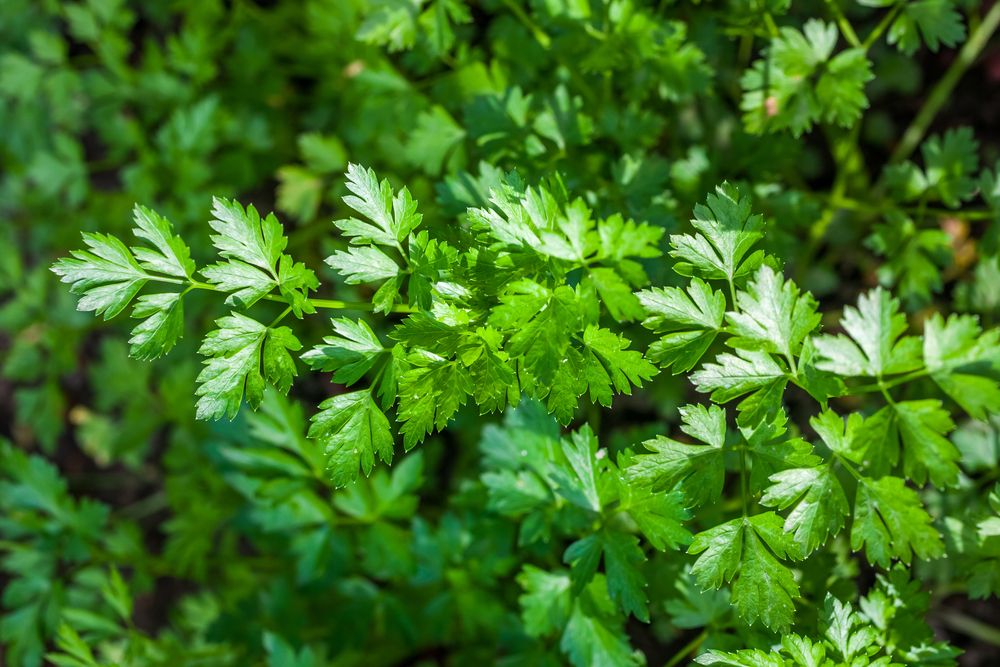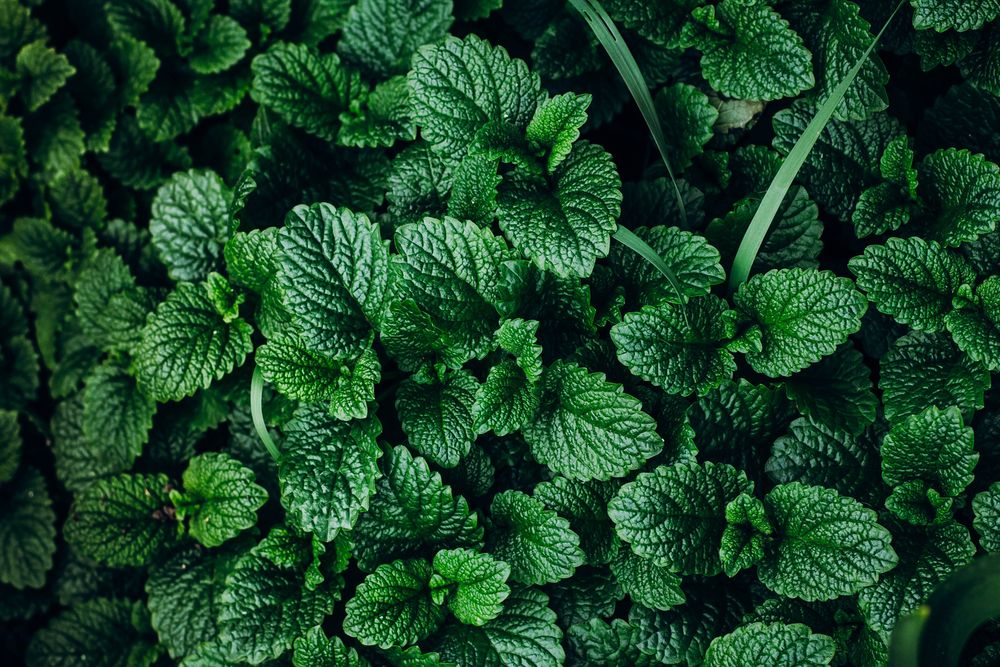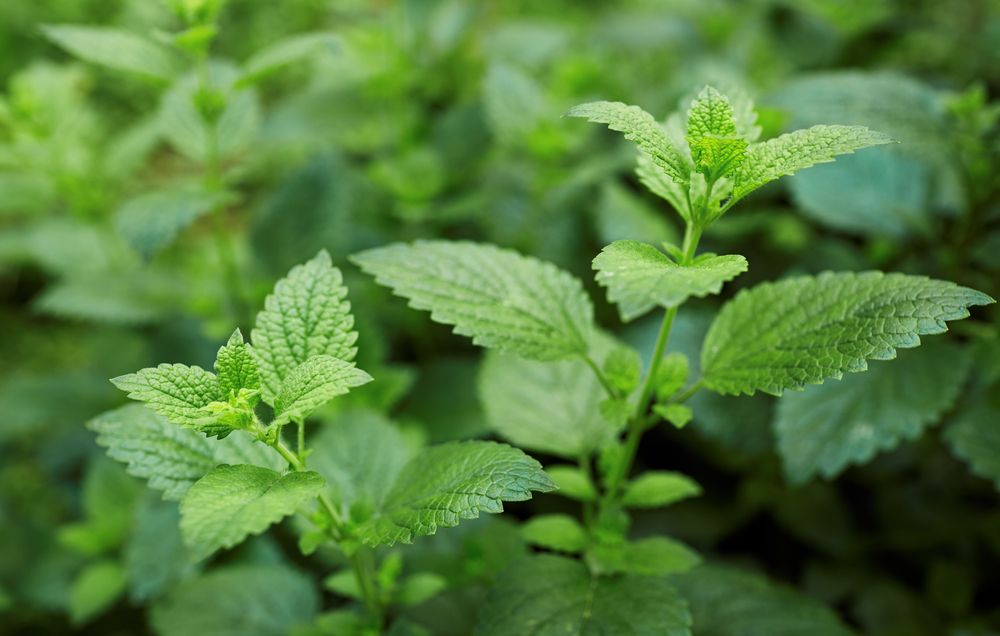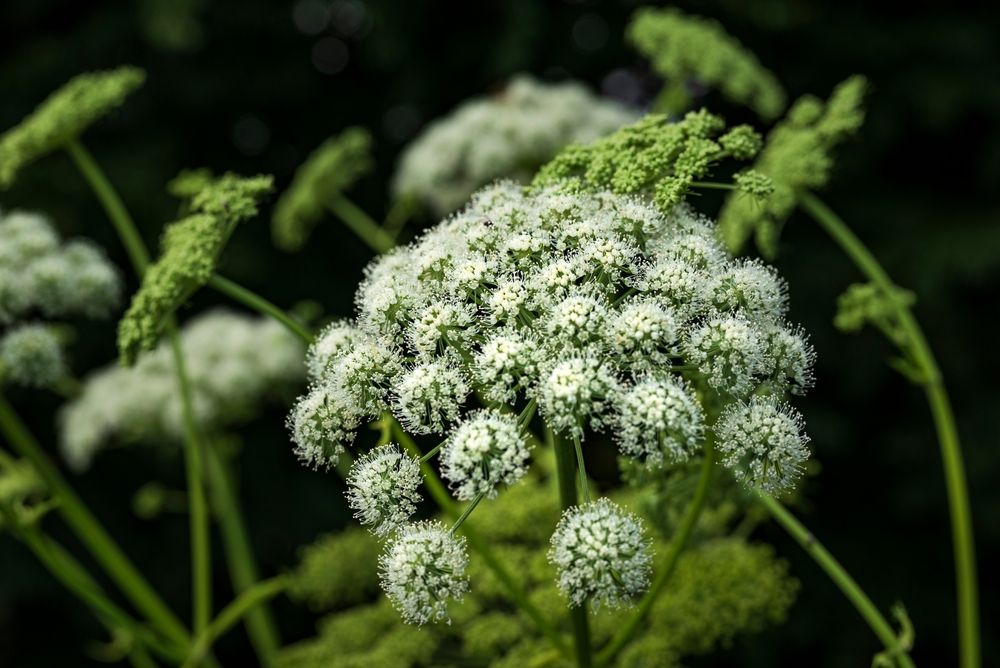Herbs are one of the most popular plants to grow in the garden for many reasons. They smell great, add color to any landscape, attract pollinators, but most importantly, enrich the taste of many dishes. If you want to take your food to the next level, it's always great to have some at hand!
Herbs grow best in full sun, but don't be discouraged if your property has some shade. A few herbs thrive in these conditions. Read on to learn all about them!
Parsley
Image credits: k_samurkas via Shutterstock
Parsley is a well-known herb you can find in most American houses. A common addition to many dishes, parsley is native to the Mediterranean region. While technically a biennial, gardeners in areas with cold and long winters usually grow it as an annual.
Even though there are more than 30 types of parsley, the two most popular ones are curly leaf and Italian flat-leaf parsley. Curly parsley can grow from 8 to 14 inches, and due to its dense clumps, it’s perfect for growing in containers, garden beds, or even as garden borders. Italian flat-leaf parsley can grow up to 3 feet, and its leaves are much sweeter than other parsley types, which makes it perfect for cooking.
Parsley grows best in a sunny spot with six to eight hours of direct sun, but it can also tolerate shade with only a little light. However, feed it with balanced liquid fertilizer for best results, and do not let it dry out. You should water your parsley deeply at least once a week to ensure its roots stay moist during the growing season.
Mint
Image credits: AnikonaAnn via Shutterstock
Mint is a perfect addition to refreshing meals and drinks. It can also add charm and wonderful fragrance to your garden, but since it’s a vigorous grower, do not let it take over your property!
Mint's taste and smell differ depending on the species. The most common mints you can find are peppermint and spearmint. Peppermint comes with sharp, dark-green leaves that are relatively small. Spearmint leaves, however, are brighter and longer with pointed ends.
Mint enjoys growing during warm days and cool nights. So if you live in a hot and dry area, it's best to grow it in a shadier spot.
Provide it with moist, rich, and somewhat acidic soil, and water it often during the growing season with a minimum of 1 to 2 inches of water every week. However, be careful not to overwater it, as this can cause diseases.
Lemon Balm
Image credits: Melica via Shutterstock
Lemon balm, also known as Melissa officinalis, belongs to the mint family. It shares many characteristics with mints, such as flavor, dark pointed leaves, and the ability to grow fast. Lemon balm is well-recognized due to its lemon scent and calming properties, but you can also add it to dishes and salads.
It’s a hardy plant, meaning you can plant it almost everywhere, but it won’t survive extremely cold conditions when the temperature drops below 30 degrees. It grows up to 2 feet and enjoys sunny spots. However, if you live in a very hot area, plant it in a place that receives enough shade.
It prefers rich and well-drained soil, so mix it with some mulch or compost to add organic matter. Also, ensure the soil is always moist by watering it deeply so that the water can reach the roots.
Angelica
Image credits: teddiviscious via Shutterstock
Angelica, or wild celery, is a biennial plant. The species Angelica archangelica and Angelica sinensis have long been used in traditional medicine. These uses include digestive aid and anxiety relief. People also drink tea made of its leaves as a skin refresher or eyewash. However, you can also use its stems as an addition to salads.
Angelica can grow from 6 to 8 feet tall and prefers cold, shady areas with only little sun. It also likes rich and moist soil. When you plant it, make sure to leave some space cause it can spread from 2 to 4 feet.
Peaceful Herbitat
Herbs are a perfect choice to plant in the garden. You can grow them together in containers or use many ideas to make your yard look more attractive. Even though many herbs prefer receiving a lot of direct sun, some will do great when you plant them in more shady areas. No matter the method and spot you choose, make sure you know how to store herbs when they’re fresh to make the most out of them!
Which herbs do you like to grow? Share in the comments below.
Happy gardening!





